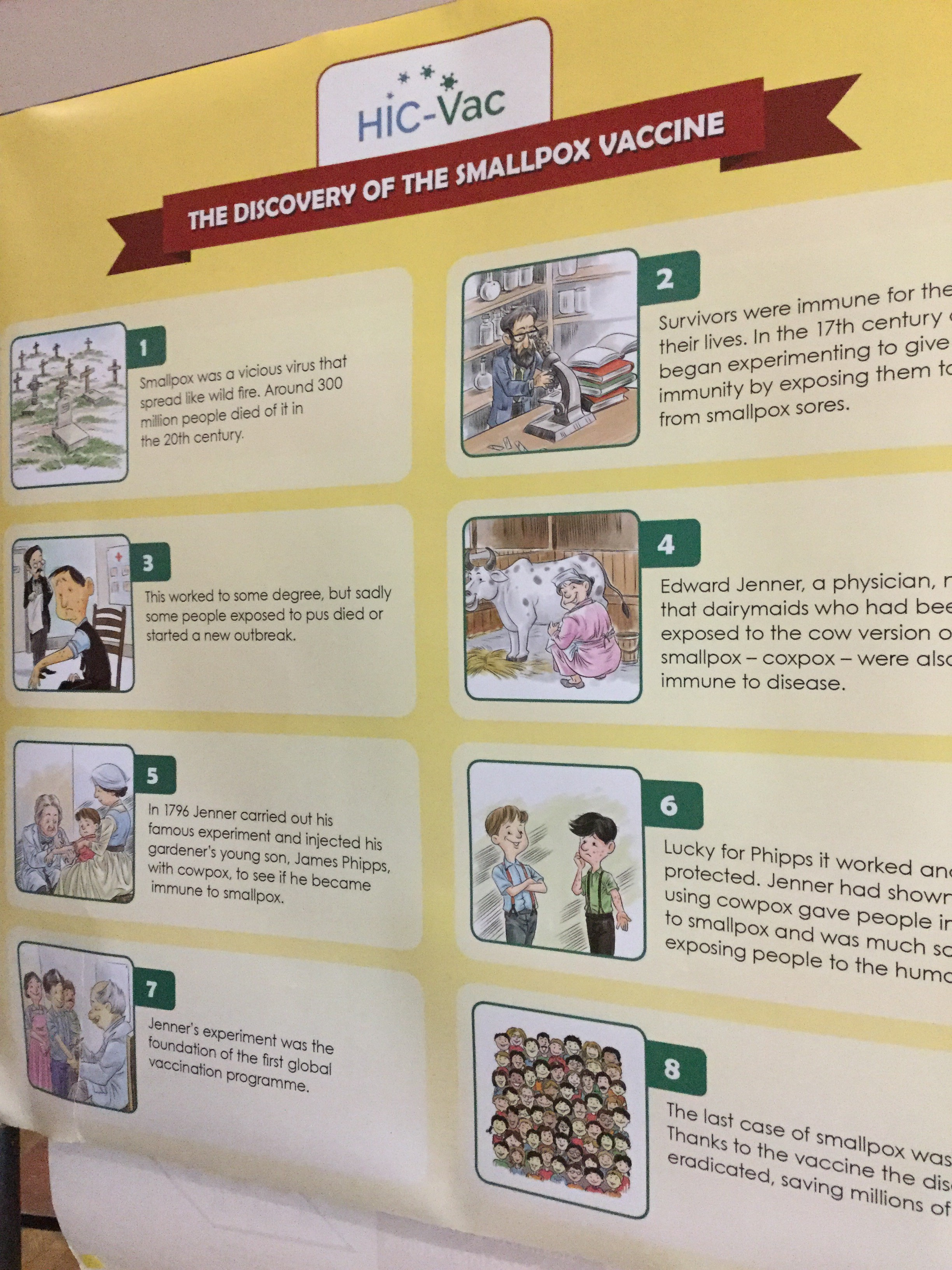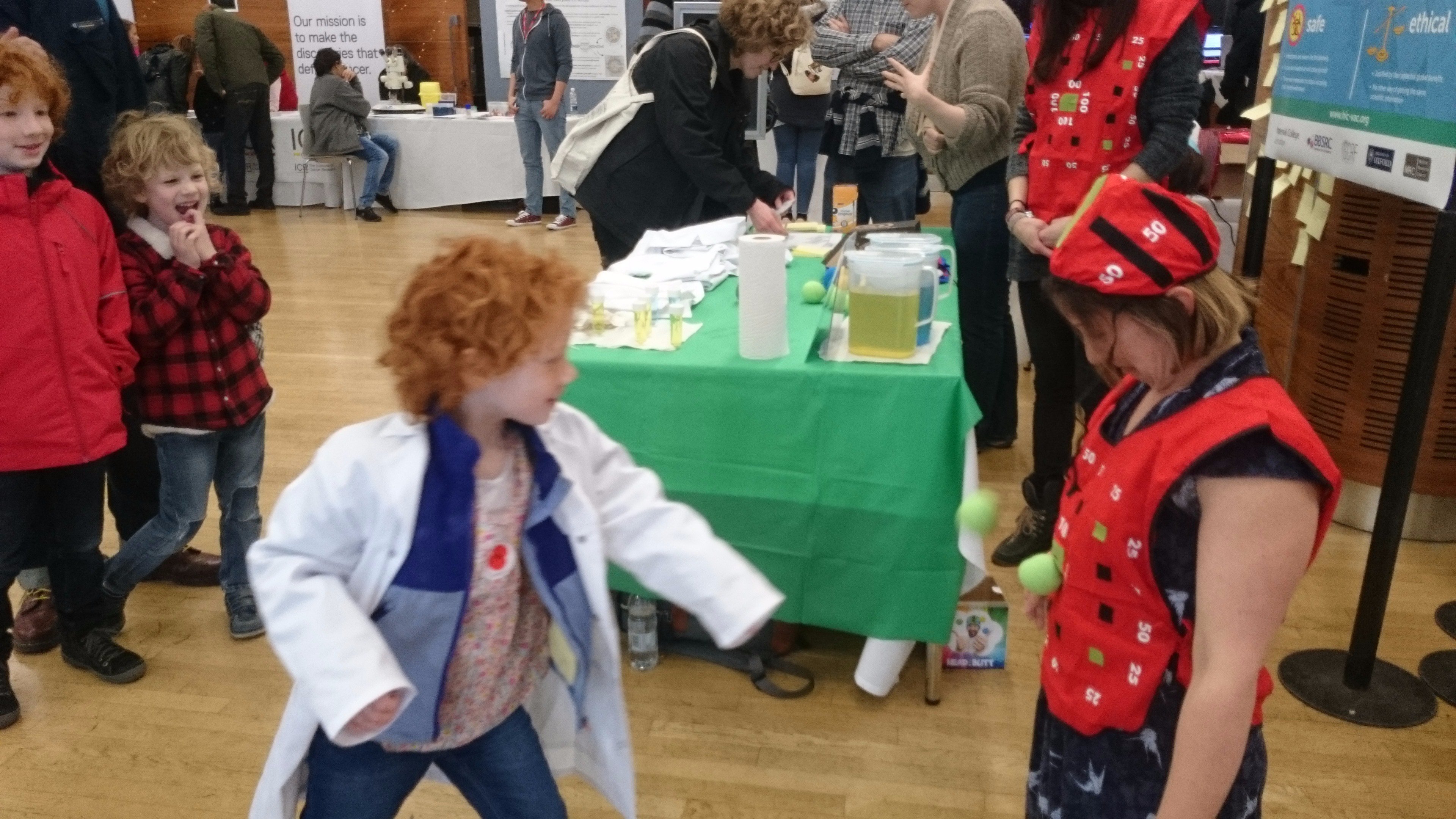Over the weekend of 28-29 April, Imperial College opened its gates to welcome children and their families to the Imperial Festival.

Visitors, young and old, were treated to a Mardi Gras of science at the South Kensington campus. The festival included more than 500 researchers and performers celebrating a huge breadth of science and engineering topics.
And this year, HIC-Vac was included in the line-up.
Based in the Cure-iosity zone, our stand aimed to engage people with human infection studies and the role they can play in vaccine development.
There were two posters for people to read; one giving an overview of modern day infection studies, and the second a historical depiction of how Edward Jenner discovered the smallpox vaccine by giving it to a young boy then intentionally exposing him to smallpox.
We were asking older visitors (16 and over) to engage with us in two ways. Firstly, after a short introduction of infection studies, we asked people whether they would participate in one and why. Understanding peoples’ motivations or concerns will help us shape communications, and could help inform participant information sheets and study recruitment materials.

The second activity we asked grown-up visitors to engage with is helping us identify which words people think best describe this kind of study. There are lots of terms that are used to refer to them, and we wanted to find out what members of the public think clearly and simply identifies them.
Last but by no means least, we had an activity for our younger visitors. Children were given an opportunity to be a scientist and help test a ‘vaccine’.
Different coloured ‘vaccines’ were available to test (don’t worry parents, it was entirely harmless) and, after donning a lab coat (safety first), they gave one of the volunteers an ‘immunisation’ using a Pasteur pipette. Most children opted to aim for an arm, but we had a couple who had experienced a nasal flu vaccine and decided to test up the nose!
To test whether the vaccine had worked, the children were given three ‘germs’ to throw at the volunteer. Through a little bit of Velcro magic, if any of the germs stuck then the volunteer became ill – our vaccine hadn't worked and it was back to the lab to make a new one. If the germs all bounced off though, then the vaccine had worked and protected the volunteer. Time to celebrate!

Some children already had a good understanding of what immunisations were and how they prevent disease, for others it was a great chance to introduce them to the topic. But in the know or not, they all seemed to enjoy throwing things at us…
We had some positive feed-back from visitors of all ages; people liking the information in the posters and parents appreciating the children’s activity and the way we explained testing vaccines to them. We also had more than 50 people help us collect information about study participation and what to call them.
Of course we couldn’t have made a success of the stand without the help of the Imperial students and staff who selflessly gave up their weekend to help run the activities. Their energy and enthusiasm was out of this world, so the final thank you goes to them for making it happen.
Thank you: Aran Singanayagam, Kate Strong, Suzanna Paterson, Lena Gruscheski, Helena Lund-Palau, Jarka Naser, Inne Nauwelaers, Patrick Mallia, Steff Ascough, Ben Lindsey, Mica Tolosa-Wright, and Etuna Bakhsoliani. Thank you also to David Swieboda and Tereza Masonou for volunteering, but who couldn't join us due to sickness.

